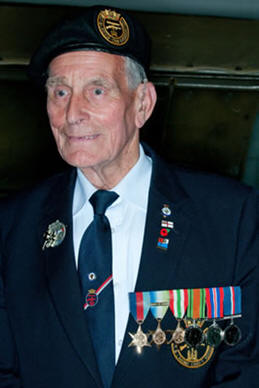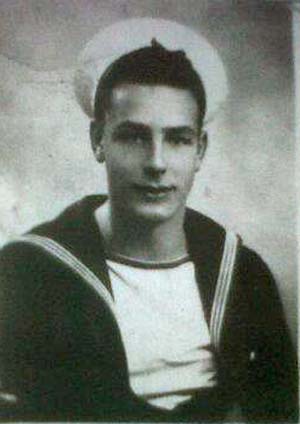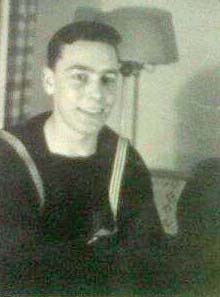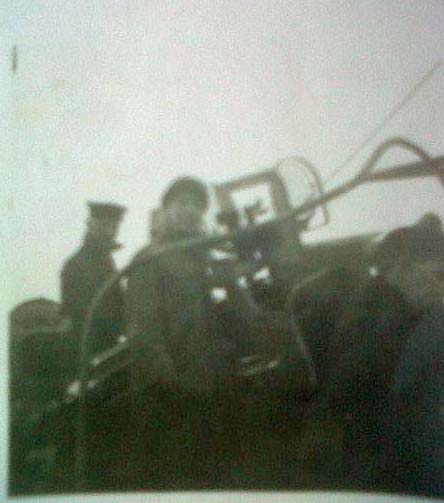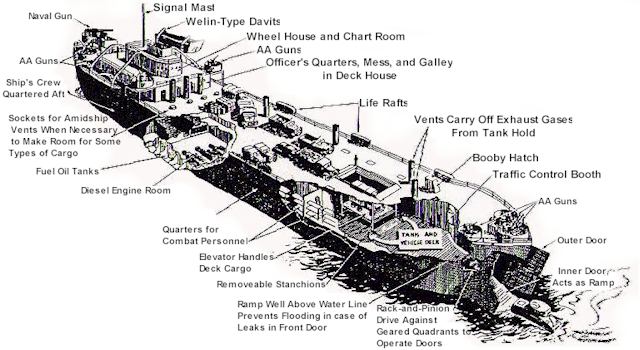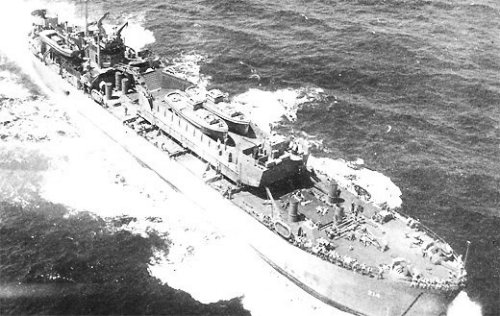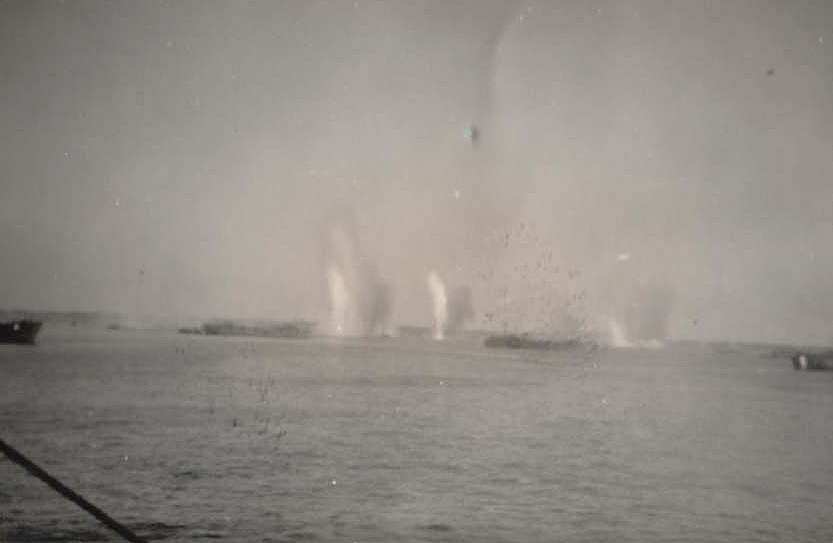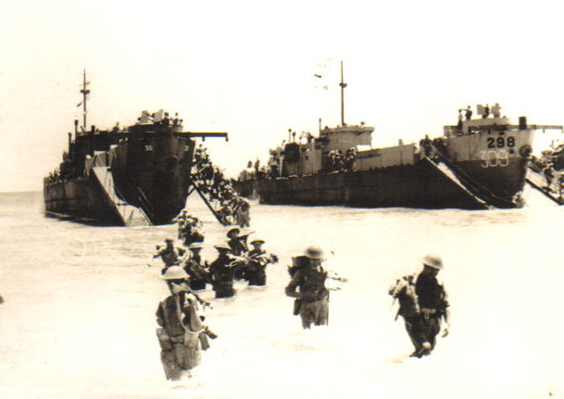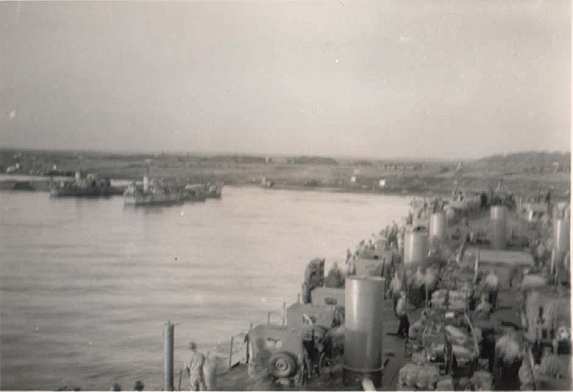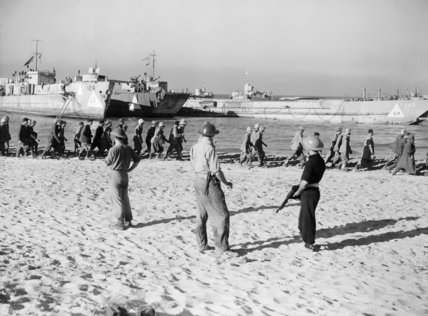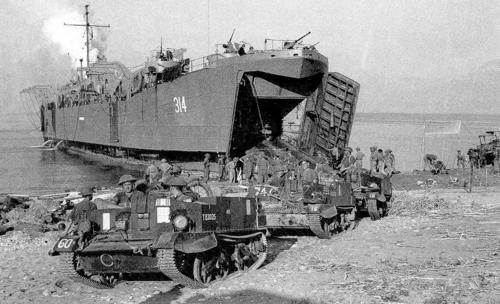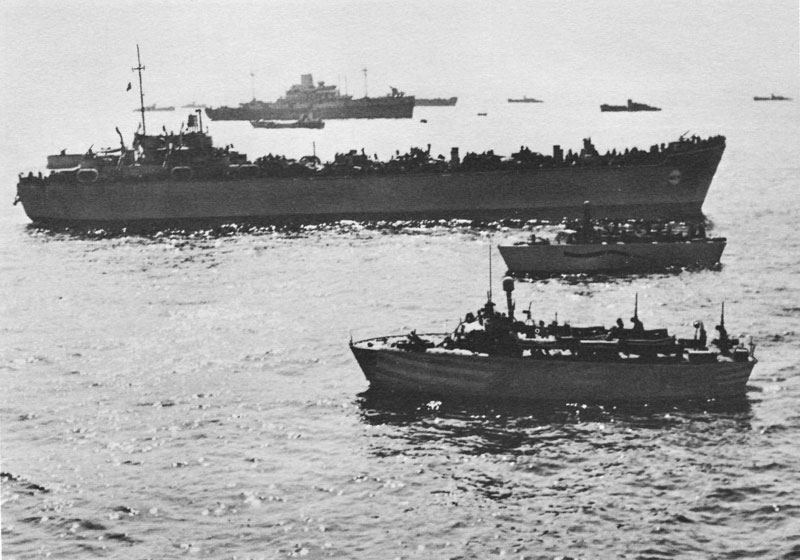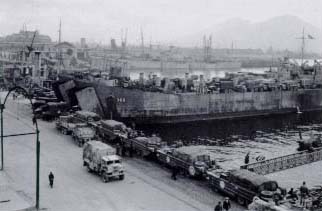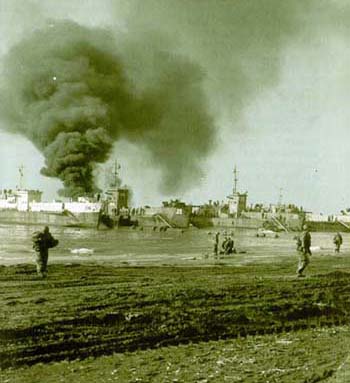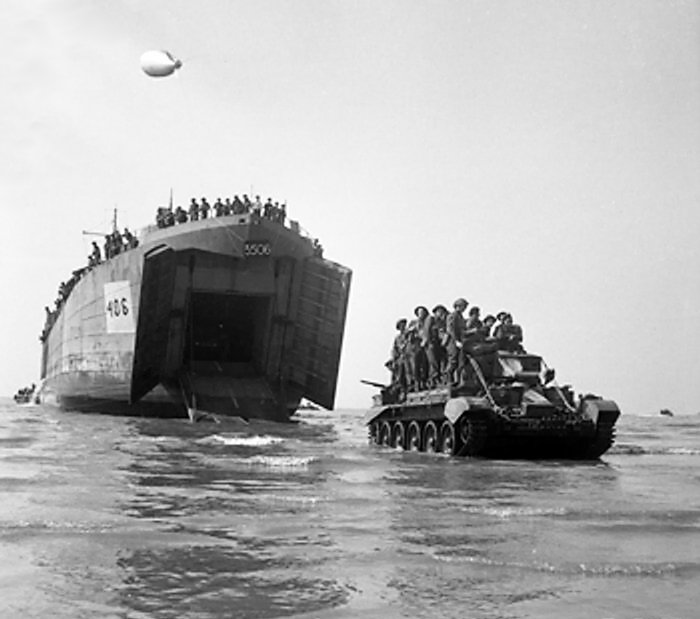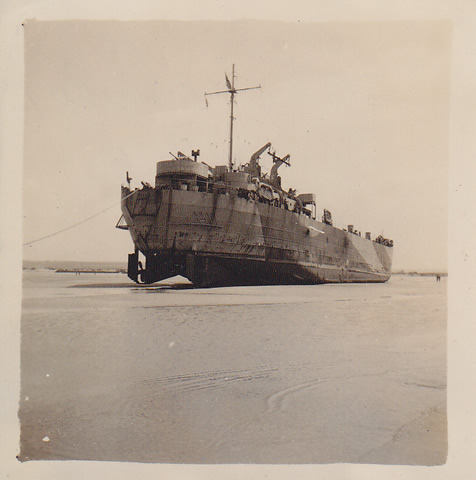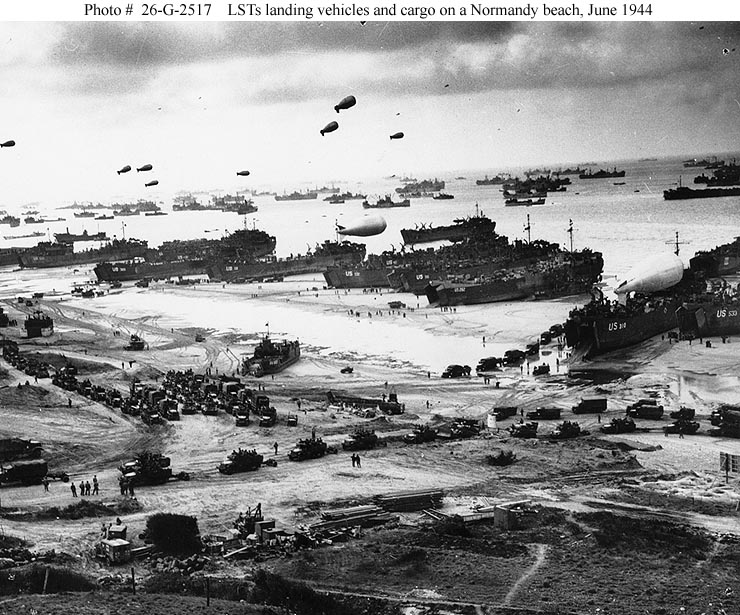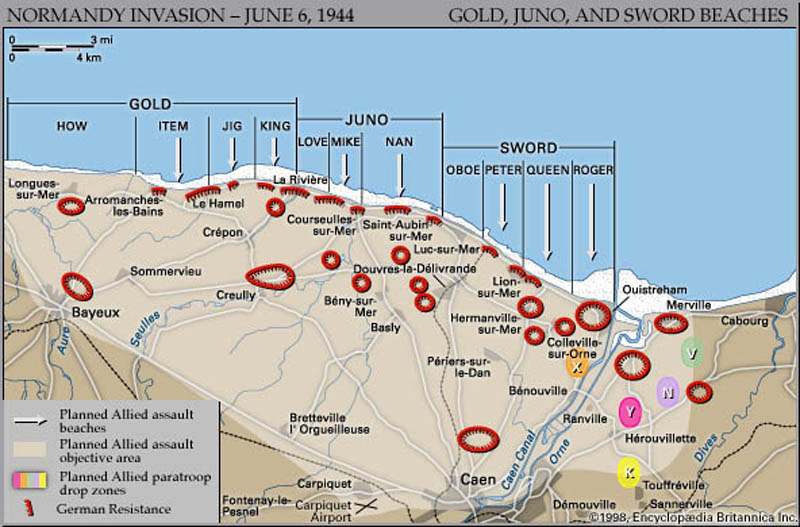|
HM-LST 322
This is not intended as a detailed look at the war history of lst 322 nor the landings it took part in, they are already well documented. It is, however, a record of the life on one sailor aboard lst 322, John Dennett, and his extraordinary feat of having been in the van of most of the invasion forces during WW2. Therefore I have only touched on the individual landings refered to. As they approached the various beaches, they would have been getting fired upon and artillery shells creating fountains of water from near misses. John was a fortunate gentleman indeed.
Landing Ship, Tank (lst) was the military designation for naval vessels created during World War II to support amphibious operations by carrying significant quantities of vehicles, cargo, and landing troops directly onto an unimproved shore. The first tank landing ships were built to British requirements by conversion of existing ships. This was followed by a purpose built ship. Thereafter, the British and US collaborated upon a joint design which was adopted for the use of both with majority of the construction carried out by the US and supplied under lend-lease. The majority, a thousand, were laid down in the United States during World War II for use by the Allies. Eighty more were built in the United Kingdom and Canada.
L322 at Sicilian Landing - Operation Husky
The strong wind made matters difficult for the amphibious landings but also ensured the element of surprise as many of the defenders had assumed that no-one would attempt a landing in such poor conditions. Landings were made in the early hours of 10 July, on Licata at 02:45 on Mollarella beach, on twenty-six main beaches spread along 105 miles (169 km) of the southern and eastern coasts of the island between the town of Licata Torre di Gaffe and Mollarella beach in the west, and Cassibile in the east, with British and Canadian forces in the east and Americans towards the west. This constituted the largest amphibious operation of World War II on terms of size of the landing zone and number of divisions put ashore on the first day. The Italian defensive plan did not contemplate a pitched battle on the beaches and so the landings themselves were somewhat of an anti-climax. More trouble was experienced from the difficult weather conditions (especially on the southern beaches) and unexpected hidden offshore sandbars than from the Coastal divisions. Some troops landed in the wrong place, in the wrong order and as much as six hours behind schedule but the weakness of the defensive response allowed the Allied force to make up lost time. Approx 50 Shermans could be loaded into one lst.
L322 at Salerno Landing - Operation Avalanche X Corps, composed of the British 46th and 56th Divisions and a light infantry force of U.S. Rangers and British Commandos of Brigadier 'Lucky' Laycock's 2nd Special Service Brigade, experienced mixed reactions to its landings. The Rangers met no opposition and with support from the guns of HMS Ledbury seized their mountain pass objectives while the Commandos, from No. 2 Commando and No. 41 (Royal Marine) Commando, were also unopposed and secured the high ground on each side of the road through the La Molina Pass on the main route from Salerno to Naples. At first light units of No. 2 Commando moved towards Salerno and pushed back a small force of tanks and armoured cars from 16th Panzer Reconnaissance battalion. The two British infantry divisions, however, met determined resistance and had to fight their way ashore with the help of naval bombardments. The depth and intensity of German resistance forced British commanders to concentrate their forces, rather than driving for a linkup with the Americans to the south.
L322 At Anzio Landing - Operation Shingle
During the early morning hours of 22 January 1944,
troops of the Fifth Army swarmed ashore on a fifteen-mile
stretch of Italian beach near the prewar resort towns of Anzio
and Nettuno. The landings were carried out so flawlessly and
German resistance was so light that British and American units
gained their first day's objectives by noon, moving three to
four miles inland by nightfall. The ease of the landing and the
swift advance were noted by one paratrooper of the 504th
Parachute Infantry Regiment, 82d Airborne Division, who recalled
that D-day at Anzio was sunny and warm, making it very hard to
believe that a war was going on and that he was in the middle of
it.
The location of the Allied landings, thirty miles south of Rome and fifty-five miles northwest of the main line of resistance running from Minturno on the Tyrrhenian Sea to Ortona on the Adriatic, surprised local German commanders, who had been assured by their superiors that an amphibious assault would not take place during January or February. Thus when the landing occurred the Germans were unprepared to react offensively. Within a week, however, as Allied troops consolidated their positions (instead of making good their advantage) and prepared to break out of the beachhead, the Germans gathered troops to eliminate what Adolf Hitler called the "Anzio abscess." The next four months would see some of the most savage fighting of World War II. Allied forces in this attack consisted of 5 cruisers, 24 destroyers, 238 landing craft, 62+ other ships, 40,000 soldiers, and 5,000+ vehicles. Genral Alexander was the British Commander. Supply problems at Anzio, originally one of the main concerns of Allied planners, never reached a crisis stage. Beginning on 28 January, six lsts left Naples daily for Anzio, each carrying 1,500 tons of cargo distributed among fifty combat-loaded trucks. Driving off the ships at Anzio, the trucks moved directly to front-line positions with ammunition, fuel, and rations and were replaced on the lsts by the fifty empty trucks that had made the voyage the previous day. In addition to lsts, fifteen smaller vessels arrived each week, and every ten days four massive Liberty ships delivered heavier equipment. Between 22 January and 1 June over 531,511 long tons of supplies were unloaded at Anzio, a daily average of 3,920 tons. The British Force ("Peter Beach")This force attacked the coast 6 miles (10 km) north of Anzio.
No 1, 2 & 3 Field Ambulance, Royal Army Medical Corps http://en.wikipedia.org/wiki/Operation_Shingle L322 on D Day Sword Beach
6th June 1944. a day that any historian knows. I will be adding John's own story to this page shortly. Sword, commonly known as Sword Beach, was the code name given to one of the five main landing areas along the Normandy coast during the initial assault phase, Operation Neptune, of Operation Overlord; the Allied invasion of German-occupied France that commenced on 6 June 1944. Stretching 8 km from Ouistreham to Saint-Aubin-sur-Mer the beach was divided into several sectors and each sector divided into beaches; thus the British 3rd Infantry Division, assigned to land on Sword, assaulted a two mile (3 km) stretch of Sword codenamed Queen Sector - Queen Red, White and Green beaches. Sword is around 15 km from Caen, the
ultimate goal of the 3rd Infantry Division. The initial landings
were achieved with low casualties but the advance from the beach was
met with traffic congestion, heavily defended areas behind the
beachhead and was met by the only armoured counterattack of the day,
mounted by the 21st Panzer Division, that halted further progress
towards Caen. lst 322 was heading for this beach. Sword was
the easternmost beach of the five landing areas of the Normandy
Invasion of World War II. It was assaulted on June 6, 1944 by units
of the British 3rd Division, with French and British commandos
attached. Shortly after midnight on D-Day morning, elements of the
6th Airborne Division, in a daring glider-borne assault, seized
bridges inland from the beach and also silenced artillery pieces
that threatened the seaborne landing forces.
In later years, John was the founder of a Wallasey Football Cub, Ashville FC, but that is a different story which appears in the following url: http://www.wirralhistory.net/wallasey.html others
http://www.navsource.org/archives/10/16/160322.htm
|
